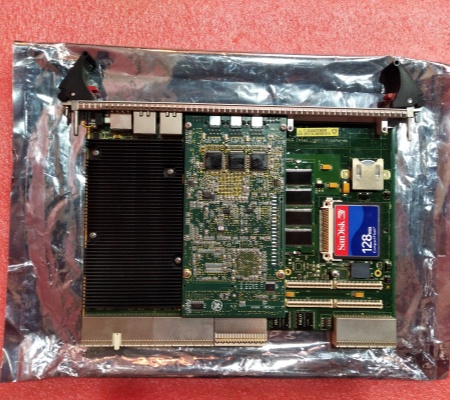| Manufacture | GE |
| Item No | IS415UCCCH4A |
| Article number | IS415UCCCH4A |
| Series | Mark VIe |
| Origin | United States(US) |
| Dimension | 180*180*30(mm) |
| Weight | 0.8 kg |
| Customs Tariff Number | 85389091 |
| Type | Single Slot Controller Board |
 The controller module consists of a controller and a four-slot CPCI rack, which must contain at least one or two power supplies. The primary controller must be installed in the leftmost slot (slot 1). The rack can accommodate additional controllers in the second, third, and fourth slots. To extend the life of the CMOS battery during storage, it should be disconnected using a jumper on the processor board. This jumper must be reconnected before reinserting the board. The battery provides power to the internal date, real-time clock, and CMOS RAM settings. Because the BIOS automatically configures the CMOS settings to their default values, no adjustments are required other than resetting the real-time clock. The initial date and time can be determined using the ToolboxST program or the system NTP server.Frequently asked questions about the product are as follows: -What is the IS415UCCCH4A used for? The IS415UCCCH4A is typically used to interface with process control systems, process logic, and manage I/O functions. -Is the IS415UCCCH4A compatible with all GE Mark VI and Mark VIe systems? Yes, the IS415UCCCH4A is designed to be compatible with Mark VI and Mark VIe systems, but the specific configuration and software version of the control system may affect compatibility. It is always important to check the hardware and software requirements of the system before installation. -What are the functions of IS415UCCCH4A? The controller has software for different applications, such as balance of plant (BOP) products, land-sea air derivatives (LM), steam and gas, etc., and is able to move program blocks or ladders. Through the R, S, T I/O network, using the IEEE 1588 standard, the I/O packets and the controller clock can be synchronized to within 100 microseconds, and external data can be sent and received between the controller control system database. It can handle the input and output of I/O data packets, the internal state and initialization data values of the selected controller, and the synchronization and status information of the two controllers. It can handle the input and output of I/O data packets, the internal voting state variables and synchronization data of each controller, and the initialization data of the selected controller.
The controller module consists of a controller and a four-slot CPCI rack, which must contain at least one or two power supplies. The primary controller must be installed in the leftmost slot (slot 1). The rack can accommodate additional controllers in the second, third, and fourth slots. To extend the life of the CMOS battery during storage, it should be disconnected using a jumper on the processor board. This jumper must be reconnected before reinserting the board. The battery provides power to the internal date, real-time clock, and CMOS RAM settings. Because the BIOS automatically configures the CMOS settings to their default values, no adjustments are required other than resetting the real-time clock. The initial date and time can be determined using the ToolboxST program or the system NTP server.Frequently asked questions about the product are as follows: -What is the IS415UCCCH4A used for? The IS415UCCCH4A is typically used to interface with process control systems, process logic, and manage I/O functions. -Is the IS415UCCCH4A compatible with all GE Mark VI and Mark VIe systems? Yes, the IS415UCCCH4A is designed to be compatible with Mark VI and Mark VIe systems, but the specific configuration and software version of the control system may affect compatibility. It is always important to check the hardware and software requirements of the system before installation. -What are the functions of IS415UCCCH4A? The controller has software for different applications, such as balance of plant (BOP) products, land-sea air derivatives (LM), steam and gas, etc., and is able to move program blocks or ladders. Through the R, S, T I/O network, using the IEEE 1588 standard, the I/O packets and the controller clock can be synchronized to within 100 microseconds, and external data can be sent and received between the controller control system database. It can handle the input and output of I/O data packets, the internal state and initialization data values of the selected controller, and the synchronization and status information of the two controllers. It can handle the input and output of I/O data packets, the internal voting state variables and synchronization data of each controller, and the initialization data of the selected controller. 